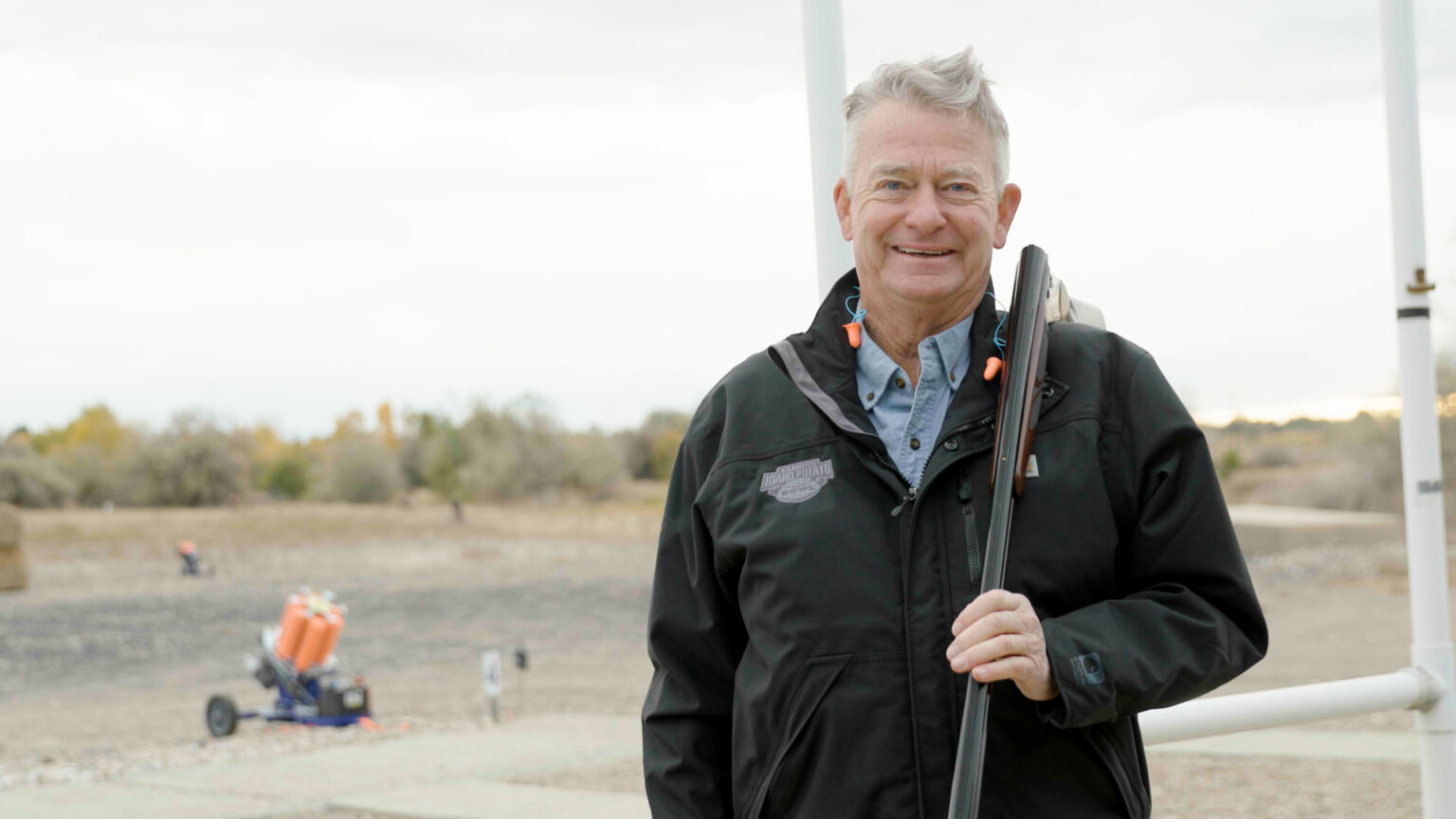On Saturday morning, 90 minutes before the deadline, Gov. Brad Little vetoed Senate Bill 1023, the Medical Freedom Act. He explained his reasoning in a letter to the Senate:
Medical freedom is an Idaho value. However, this bill removes parents’ freedom to ensure their children stay healthy at school because it jeopardizes the ability of schools to send home sick students with highly contagious conditions…
This concern was raised during the debate over S1023, but supporters of the bill argued that it would not be an issue. Rep. Chris Bruce responded on X, stating that the bill would not prevent schools from sending sick children home; rather, it only bans mandating medical interventions.
I asked the Grok AI to analyze both the bill and the governor’s letter to assess the validity of his concerns. Here was its conclusion:
Little’s specific claim about sending home sick students has weak merit, as the bill doesn’t directly impede that authority. His broader concern about health risks has more plausibility but exaggerates the bill’s scope and conflicts with his prior anti-mandate stance. The veto reflects a pragmatic worry about unintended consequences, but the definitions and text suggest schools retain enough flexibility to manage outbreaks without mandating interventions.
I was not surprised by this move, considering Gov. Little had vetoed the original Coronavirus Pause Act in 2022. Both big business and big pharma oppose prohibitions on forced medical interventions, and they surely have an outsized influence on the governor’s thinking.
I joined other Idaho conservatives in expressing our frustration on social media. Members of the Idaho Freedom Caucus shared their perspectives in an X Space yesterday evening and Boise pathologist Dr. Ryan Cole hinted at a primary challenge. Nevertheless, what’s done is done. It’s unlikely the Senate will override the veto, as four senators who originally voted against S1023 would need to change their votes.
I want to go beyond the momentary outrage and explore how a governor like Brad Little can generate such anger among conservative Republicans while maintaining fairly high popularity statewide. My earliest posts on this very publication were about Gov. Little, his actions during the pandemic, and his challengers in the 2022 Republican primary. I feel like I’ve been writing about him forever; over the past six years, he has been a constant specter, presiding over Idaho politics through a time of incredible turmoil and change, but also prosperity.

Some conservatives believe that vetoing S1023 spells doom for the governor. I played the role of wet blanket on Saturday by pointing out that backlash over COVID lockdowns wasn’t enough to defeat him in 2022, so it likely won’t be enough in 2026 either. While it’s possible that MAGA/MAHA momentum has built to a level where an insurgent campaign might have a chance, that still seems unlikely to me.
What can we do then? If conservatives seek to mount a serious challenge against Governor Little and his political machine, we must first understand why he remains popular with Idaho voters.
Idaho’s governor significantly and permanently damaged his relationship with conservatives during the COVID pandemic. He issued a Stay-at-Home Order, giving legal cover to bureaucrats who locked down communities and closed churches, schools, and businesses. Gov. Little stood idly by when Sara Brady was arrested for taking her children to a park in Meridian and when parishioners in Moscow were arrested for singing outside. Yet, his reelection in 2022 demonstrated that he still had the confidence of most Idaho Republicans.

Outside of the pandemic, Brad Little has a relatively strong record compared to other Republican governors. He signed the first-in-the-nation law protecting women’s sports, two abortion bans that took effect after the Supreme Court overturned Roe v. Wade, and “that stinkin’ library bill” last year. He has signed approximately $15 billion in ongoing tax relief and overseen significant cuts in regulations since he took office in 2019. This year alone, he signed bills prohibiting mask mandates, protecting the conscience rights of medical practitioners, and enacting real school choice legislation after years of opposition.
However, the governor has not led on any of these issues. Even tax cuts and regulatory reforms were initiated by Republicans in the Legislature. Gov. Little has a knack for sensing political winds and stepping out in front of issues that Republican voters care about. In his State of the State Address this year, the governor called for $100 million in tax cuts. House Republicans aimed instead for $400 million, and Little expressed concern that it was too much. Nevertheless he signed all three major tax bills, with fanfare each time, and we’ll surely hear about “the governor’s tax cuts” on the campaign trail this year.
Last year, as the Idaho GOP and other organizations fiercely battled ranked choice voting, the governor waited until nearly the last minute to oppose the measure rather than taking an early stand. He even took credit for property tax relief in 2023, despite the Legislature needing to override his veto of House Bill 292 to make it happen. I have to admire both the chutzpah and the political acumen.
Conservative frustration with Gov. Little stems from a mismatch in priorities. We want decisive leadership on conservative principles, a champion who will dismantle the administrative bureaucracy and slash government spending. We look at headlines about Republican governors Ron DeSantis of Florida, Greg Abbott of Texas, and Sarah Huckabee Sanders of Arkansas and ask, “Why can’t we have that here?”
On the other hand, Brad Little appears to see his role as maintaining the system that has kept Idaho running for the past generation. He’s not interested in dismantling bureaucracy because, from his perspective, it’s functioning as intended. He’s not focused on leading conservative movements because he prioritizes economic growth instead. Consider the issues on which he has led: investments in roads, bridges, schools, teachers, and especially the Launch Grant, each of which involves spending taxpayer money rather than reforming government or implementing conservative policies.
Many conservatives oppose the Launch Grant because it funds what is essentially free college, an idea more aligned with the Democratic platform. It also directs taxpayer dollars through the Workforce Development Council to businesses friendly with the governor, raising concerns of quid pro quo. However, from Gov. Little’s perspective, the program helps high school graduates find purpose, businesses find workers, and Idaho’s economy grow. “Why focus on abstract principles?” he might ask, when the program is clearly accomplishing his goals.
Conservatives are desperately seeking a champion, a political warrior akin to our Founding Fathers, but Brad Little seems content to be a manager, the CEO of Idaho. Indeed, our state constitution vests “supreme executive power” in the governor’s office. I wrote about this conflict of perspectives two years ago:
Consider Governor Brad Little. Is he a manager, or a reforming statesman? He came from a family of sheep ranchers and was on the board of the Idaho Association of Commerce and Industry (IACI) for twenty years, including some time as its chairman. He was appointed to a vacant seat in the Senate in 2001, was appointed to fill the vacant lieutenant governor position in 2009, and then elected governor in 2018. Everything he achieved came because of the existing system, so why would we expect him to change it?
As I reflected on this over the weekend, Sen. Glenneda Zuiderveld expressed a similar sentiment in her own Substack newsletter:
I’ve made this comment more than once during this session—I feel more like a CEO of Idaho, Inc. than a state legislator. The decisions we’re making often feel less about preserving the values of a constitutional republic and more like managing a corporation, where budgets and bureaucracy take priority over protecting the liberties of the people.
Half a century ago, businessmen had a saying: “Nobody gets fired for buying IBM.” Most people in positions of authority prefer to play it safe rather than take risks. Everyone else buys IBM products, so don’t go out on a limb by doing something different. Ironically, IBM’s own inflexibility is what allowed Microsoft and Apple to dominate the tech industry. Every system, every bureaucracy, eventually collapses under its own weight unless it is shaken up and reformed from time to time.
Governors who keep their state’s economy running don’t lose reelection, and that appears to have been Brad Little’s strategy from the start. Idaho’s booming population and economy have allowed him to have it both ways: signing (and taking credit for) $15 billion in tax relief while also increasing taxpayer-funded investments in transportation and education. He can tout Idaho’s balanced budget, thanks in no small part to more than a third of revenues coming from federal coffers, and he has put his signature on enough socially conservative legislation to blunt most criticism. At the same time, he remains at the center of Idaho’s most powerful political machine.
Yet, we know in our hearts that a governor could do so much more. Look at President Donald Trump’s first two months of his second term: shutting down pointless federal agencies, auditing the government for waste and fraud, securing the southern border in ways Democrats claimed were impossible, and reorienting America’s geopolitical stance.
Imagine that approach at the state level. Imagine a governor who installs his own DOGE team to audit and eliminate millions of dollars in unnecessary spending. Imagine cutting entire agencies that have outlived their purpose or should never have existed at all. Imagine what a governor could accomplish with the drive and vision we see from President Trump.
That is my biggest disappointment with Gov. Brad Little: He does enough to get by, but he could be so much more. A better governor would lead on conservative policy, while a worse one would be easy to defeat. That raises the question: How can we take the next step?
Any conservative challenger to Gov. Little, or to whoever inherits his political machine, must be a formidable figure. This candidate needs three key qualities: name recognition, charisma, and the ability to raise a couple million dollars at a moment’s notice. Simply preaching fire to the conservative base isn’t enough: Janice McGeachin and Ed Humphreys mostly stuck to that strategy in 2022 and they combined for 43% of the vote. On the other hand, Raúl Labrador was able to defeat both an incumbent and a second challenger in the race for attorney general by preaching a conservative message in a moderate tone. As far as money goes, Little raised more than $2.5 million for the 2022 election cycle and could surely double that without much effort if necessary.
Additionally, this candidate would need the political experience to be effective if elected. State government is a massive system, and reining it in will require extensive effort and specialized knowledge. Even President Trump, with a lifetime of business experience, was stymied during his first term.
Even setting aside his veto of S1023, I don’t see Brad Little losing in 2026 if he chooses to run for a third term. I believe the best path forward for Idaho conservatives is to focus on expanding our influence in the Legislature over the next two sessions while cultivating a strong bench of candidates who could mount a serious challenge in 2030. Potential candidates should spend the next few years gaining experience, becoming household names in Idaho, and crafting a clear vision for what a truly conservative governor can achieve.
It’s always possible that a candidate could catch fire over the next year, raising $5 million while delivering a compelling message to the people of Idaho. We should remain hopeful, but also realistic. Consider the 2022 primary: Republican gubernatorial challengers collectively raised over a million dollars, yet Gov. Little still secured more than 50% of the vote. Meanwhile, Priscilla Giddings fell less than 10% short in the race for lieutenant governor, Branden Durst lost the state superintendent race by less than 6%, and Dorothy Moon missed winning the secretary of state race by a mere 1.66%. How much further might that money have gone if conservatives had focused on down-ballot statewide races instead of what in hindsight was a quixotic campaign for the top spot?
If conservatives want to offer a serious alternative to the governor, we must take a realistic view of the political landscape and develop a strategy that aligns with that reality. As long as we cling to the hope that single-issue outrage alone will be enough to defeat Gov. Little and his machine, we will continue to lose. If we want to see a Trump-like figure step into the governor’s office and take a wrecking ball to state government, we must be prepared to put in years of work to make it happen.
Feature image from bradlittleforidaho.com.
Gem State Chronicle is a reader-supported publication. To receive new posts and support my work, consider becoming a free or paid subscriber.
About Brian Almon
Brian Almon is the Editor of the Gem State Chronicle. He also serves as Chairman of the District 14 Republican Party and is a trustee of the Eagle Public Library Board. He lives with his wife and five children in Eagle.













